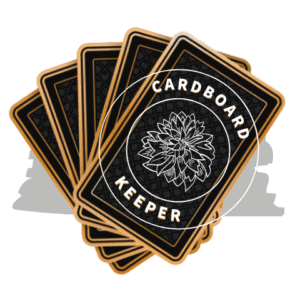If you are just beginning to learn how to play Magic the Gathering, there are many different rules and abilities you will need to understand. One such ability, Menace, will be frequently used during your Magic the Gathering matches.
When a player attacks with a Magic the Gathering creature that possesses the keyword “Menace,” the opposing player must use at least two creatures to block the attack. Once the opposing player plays at least two blockers, the attacker chooses which creature gets damaged first.
Learning all the different mechanics of Magic the Gathering and how they work can get quite complicated. Learn more about how creatures with the Menace mechanic work and how to play them during your next match below.
Menace Mechanics
It is time to learn more about the mechanics of Menace. In Magic the Gathering, mechanics refer to how a keyword ability or keyword action works. In other words, the mechanics are the rules governing the abilities printed in the creature’s text box.
Now that we’ve got that little misconception cleared up, what are the rules (aka. the mechanics) of Menace?
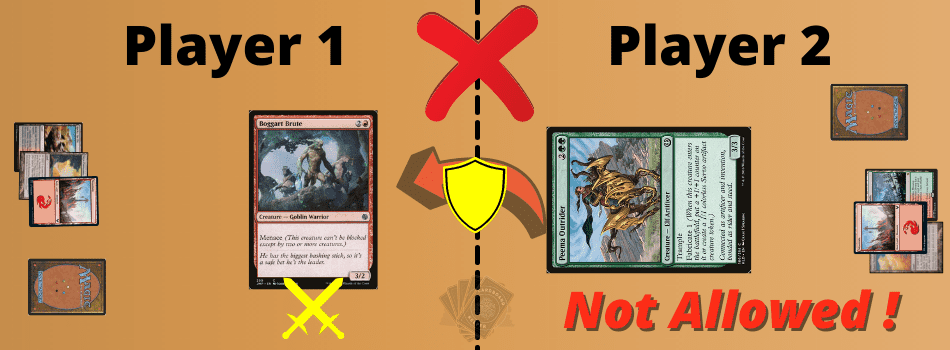
If a creature has the word “Menace” in its text box, it can only be blocked by two creatures. In other words, your opponent cannot block your Menace creature Boggart Brute with only one Peema Outrider. Instead, they will have to play another creature alongside it.
Not even a double strike creature can take on a Menace creature by itself. However, this creature can still be used to block the Menace creature, with another creature of course.
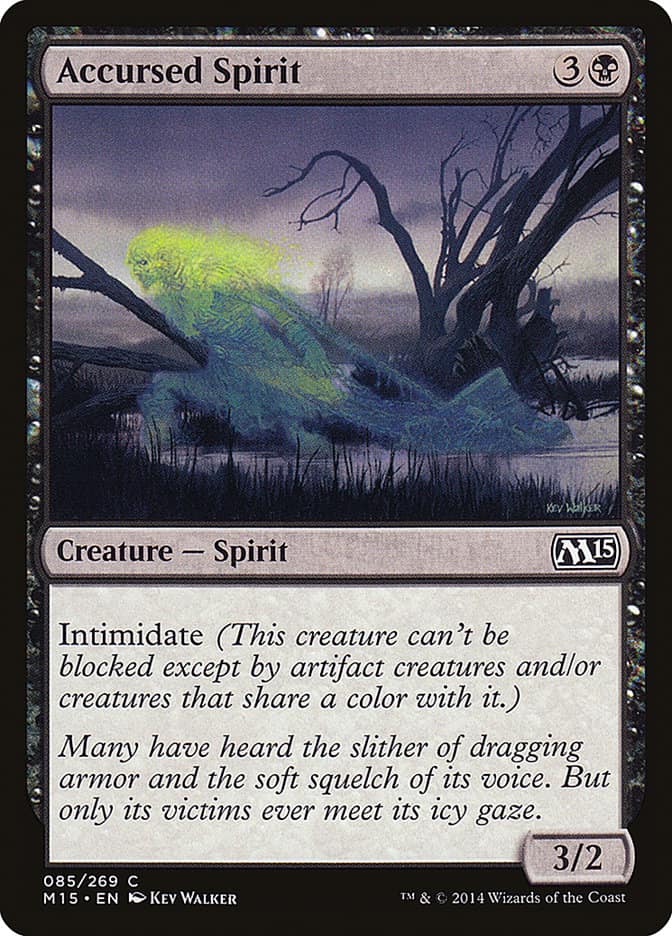
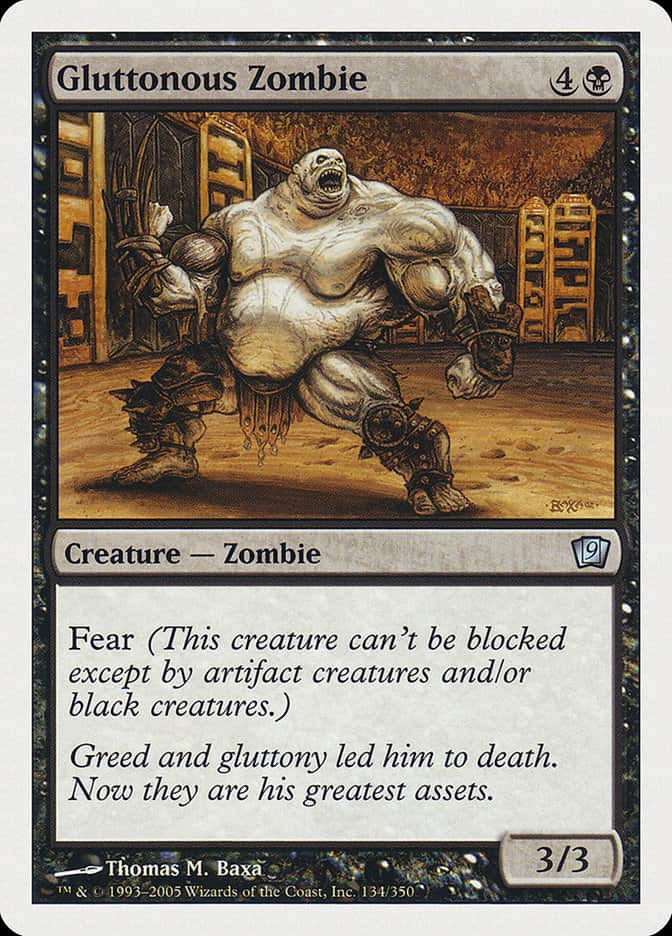
So how did this change from the other keyword mechanic, “Intimidate”? “Fear” and “Intimate” could only be blocked by artifact creatures or those with specific colors. Now, creatures with the keyword Menace can be blocked by almost any creature. The only difference is the number of creatures it must be blocked by.
Because Menace creatures alter when and how the opponent can block, it is considered an evasion ability (see MTG rule 702.110a).
The Menace keyword is used on more than just creatures. Some vehicles have the ability as well. However, the vehicle must receive a crew before it can be used to attack your opponent. While this will provide you more damage to attack with, it will also require tapping several creatures.
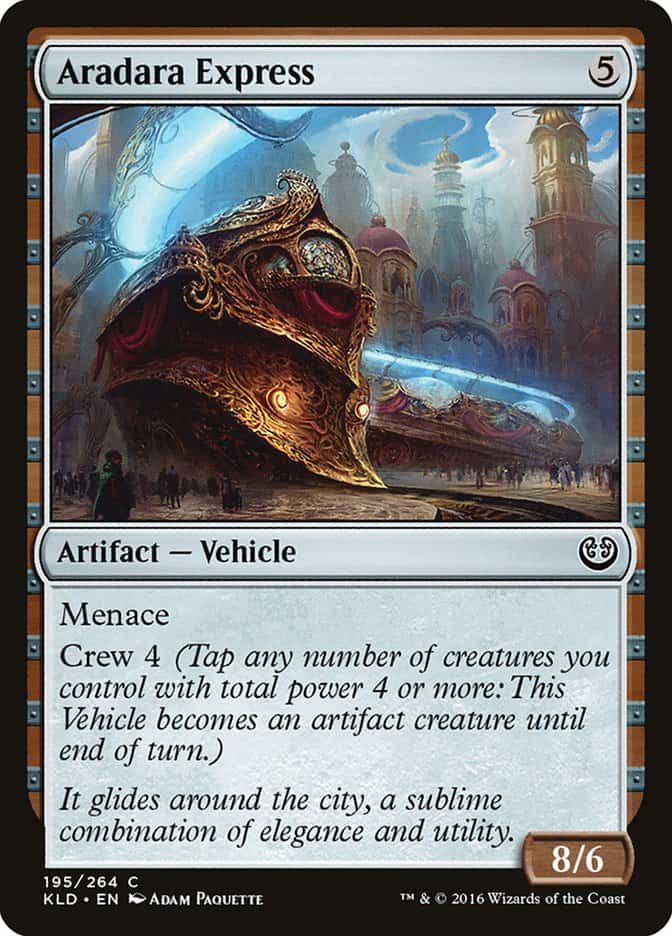
Not sure what the difference between a tapped and an untapped creature?
A card becomes tapped in Magic the Gathering when you use its activated ability. This only applies if the card features the “tap” symbol. The tap symbol is an arrow that looks like it is rotating the card. When a card gets tapped, you rotate it 90 degrees. So how do you un-tap a creature in Magic the Gathering?
Creatures become untapped at the beginning of your turn.
When a Menace creature is played the opposing player can react in two ways. They can choose to block the Menace creature or they can choose to let the Menace creature attack. After the player makes their choice, the game proceeds to the combat phase.
While the Menace ability is a very powerful mechanic, there are certain ways to play it that will work better than others. We will cover a few of these strategies below.
MTG Offical Rules
- 702.110a Menace is an evasion ability.
- 702.110b A creature with menace can’t be blocked except by two or more creatures. (See rule 509, “Declare Blockers Step.”)
- 702.110c Multiple instances of menace on the same creature are redundant.
How to Use Menace Effectively
Some creatures won’t allow the defending players to block them.
If this is the case with the Menace creature in question, there is no way for the opposing player to block it. Additionally, some creatures have the ability to not be blocked by more than one creature.
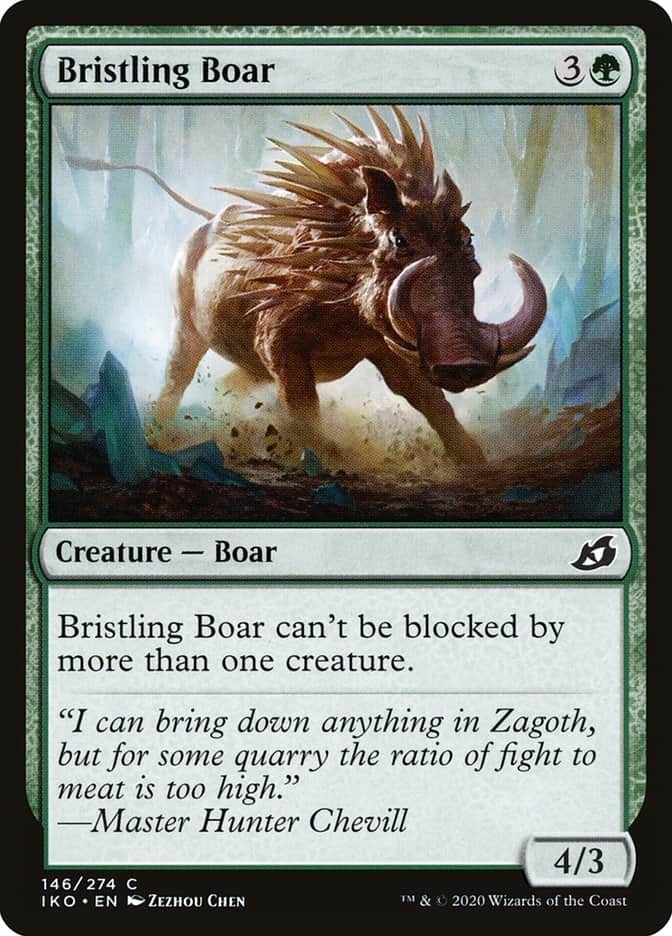
Give this card Menace ability and the creature becomes unblockable! This is an extremely powerful play. Save this play for moments when your opponent has a very powerful creature that will require some extra effort to take down.
However, what if the creature has more than one Menace ability? Say that your creature has two Menace abilities on it. Does this mean that the opposing player has to defend with four creatures?
Unfortunately for the attacker, no. A creature can only have one Menace ability.
That said, the attacker can attack with two separate Menace creatures. When this happens, the opposing player can only block one of the Menace creatures (assuming they only control two creatures capable of defending it).
Using tactics like these are the best way to win combat using a Menace creature, but what if you’re the one on the defending side? What should you do then? Learn how to fight back against a Menace card below.
How to Combat Menace Creatures
It might be surprising, but you can use a Menace against another Menace. That said, the Menace creature does need to be played alongside another blocker (remember, the original Menace creature can only be blocked by two creatures). If you play a creature with Menace as part of your blocking team, the attacker will have to block with two creatures as well.
The best way to fight back against creatures with the Menace mechanic is to remove their ability to use it. While you can’t remove the Menace ability from a card that has it printed on it, you can remove any cards giving that creature the Menace ability like enchantments.
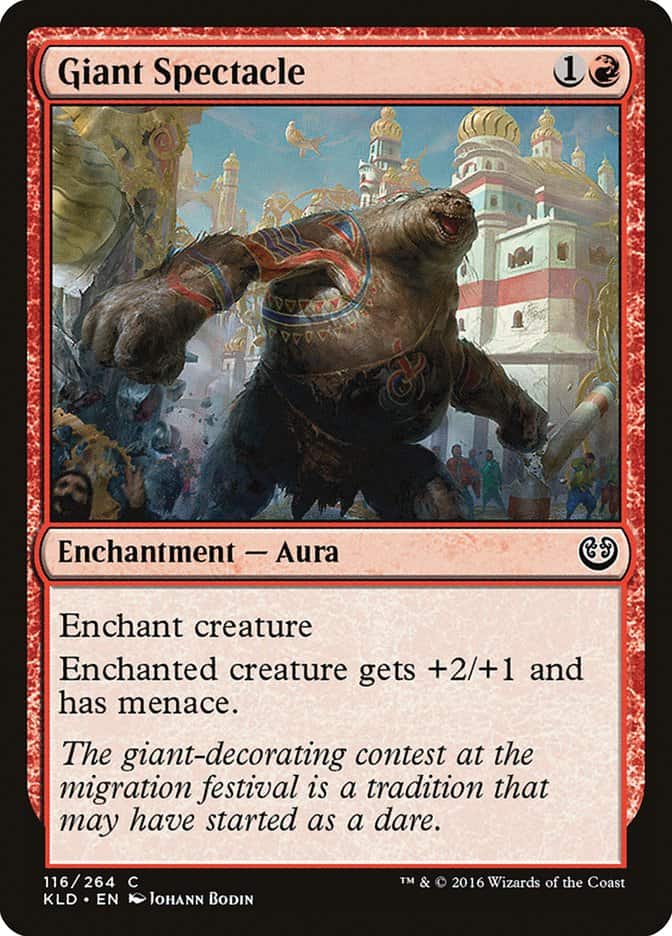
If you have no way to remove the Menace ability, your only option is to fight back. Or not, you could always let the Menace creature attack you. This is only suggested if the Menace creature is not powerful enough to cause significant damage to you.
Let’s assume that this Menace creature could cause significant harm to you. In this case, you’ll want to block it. You should only use creatures that are strong enough to withstand the Menace creatures’ attacks.
While you could use two weaker creatures to block it, you would have wasted the manna you spent on them. Don’t throw away your creatures, use creatures that can defend themselves and fight back against the Menace creature during combat.
If possible, check to see if you have any token creatures to defend against creatures with Menace instead of losing more value creatures first.
Declaring Blockers
If the defending player chooses to block the Menace creature, they must declare their blockers before the match can move onto the combat phase.
This requires the player to complete several steps. These steps are outlined in Magic the Gathering rule 509. According to rule 509.1, if the player can’t complete all the steps in order, then they cannot block the Menace creature’s attack.
This process starts with the player choosing the creatures they want to block with. The creatures they choose must be untapped.
Other reasons that a card would come tapped is if it is declared an attacker, regenerating a creature, and paying the cost of a spell or ability.
Creatures not designed for blocking cannot be used to block a Menace creature. The creature will say that it can’t block in the text box. Additionally, some creatures can only block when certain conditions have been met.
In the Magic the Gathering rules, they explain that a creature using flying power cannot be blocked by a creature without the flying ability. If the attacking creature has any other abilities, the blocking creatures must have those same abilities (see rule 509.1b).
Next, the player must pay any costs associated with their selected blocking creatures. Once the costs are paid, the Menace creature is officially blocked and the combat phase begins.
The Combat Phase
If the Menace creature becomes blocked, this does not stop the attack. Combat still ensues.
At the beginning of the combat phase, the player (often referred to as the controller) of the Menace creature determines the order it will attack the blocking creatures. This continues until the attacking creature has used all of its power. The Menace creature cannot move on to the second blocking creature in its damage order until the first has received lethal damage.
If one of the blocking creatures has Death Touch, it will kill the attacking Menace creature. Unfortunately, the attacking Menace creature will likely choose to attack this creature last, killing all the others first. The same could be said for an indestructible creature. While this creature has the ability to withstand all the attacks dealt by the Menace creature, it would be silly for the attacking player to put that creature first in its attacking lead.
Even if all the blocking creatures are defeated, the Menace creature is still considered blocked. A creature can only become unblocked when a spell or ability changes that.
Once the attacking creature has removed all the blockers, any of its remaining power is then applied to the player.
Overall, Menace creatures are fascinating and will be an important part of your Magic the Gathering deck.
The Origins of MTG Menace
The Wizards of Magic the Gathering introduced the Menace mechanic in their 17th Core Set Magic Origins in 2015. A Core Set is what tournament players use as their base set. They can then collect more specialty cards to add to this base set.
Menace is an evergreen keyword. This means that the Menace card can appear within any Magic the Gathering set.
Before Menace became its own mechanic, it was printed on many cards in the form of instructions. As more cards were assigned these instructions, the Wizards of Magic the Gathering errata’d them. In other words, they simplified the instructions by changing them to the keyword ability “Menace.” Reprints of older decks no longer have the wordy instructions printed on them. These instructions are replaced by the word “Menace.”
Menace originated from the instructions assigned to the Fear card. Fear was first introduced in 1993; however, the Wizards felt that creature/mechanic’s name was a bit confusing.
It was thought that when a creature had the keyword “fear,” it was scared. However, it was meant to mean that the creature inflicts fear. To fix this misconception, the mechanic needed to be renamed.
The creators of Magic the Gathering renamed it “Intimidate.” This name fits its true meaning much better. This change expanded the mechanic into more colors than fear was originally produced in. It also altered the mechanics slightly. While fear could only be blocked by artifact creatures and black creatures, creatures with Intimidate could be blocked by artifact creatures or those creatures that share its color.
Intimidate first appeared in the Zendikar deck. The last deck to see this ability was the Commander 2014 deck.
Intimidate eventually evolved into the popular mechanic “Menace.” This change was due to the fact that opposing players were hindered if they didn’t have a card of the same color. For this reason, it was necessary to “rebalance” the game.
This change was mainly influenced by the growth of tournament play. How could tournament players be evenly matched if players with a certain color deck received an unfair advantage? They couldn’t.
But how did the mechanics change with this errata/rebalancing? Learn more about how to play a Menace creature in the following section.
The first card to feature the Menace mechanic was Goblin War Drums in Fallen Empires.
Currently, Menace’s primary color is Black. This means that it is mostly found with black decks. Menace’s secondary color is red and its tertiary color is green.
If you are preparing to play an opponent with a deck of any of these colors, prepare to be battling several Menace creatures.
